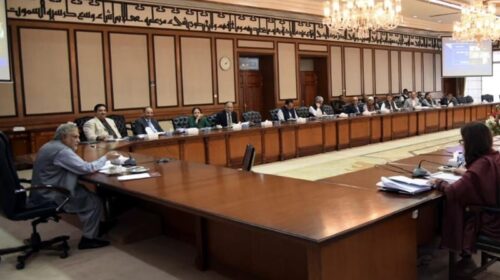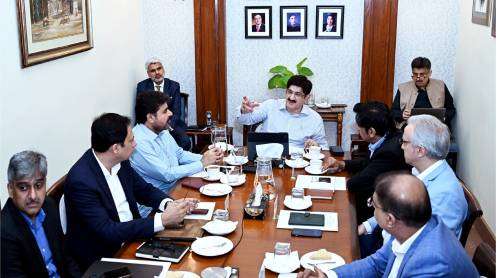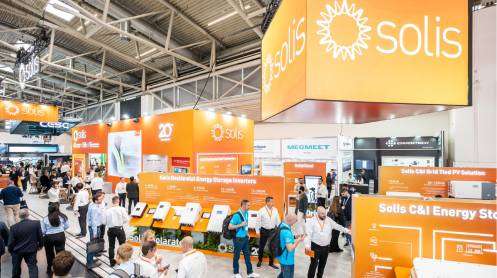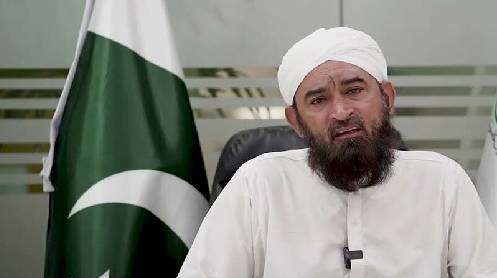As the country’s fiscal deficit surged by 43 per cent in the first quarter of the current fiscal year, the government on Friday decided to increase Petroleum Development Levy (PDL) by about 67pc (Rs20 per litre) on top quality petrol used in luxury vehicles.
The decision to increase PDL on Research Octane Number (RON) 95 and 97, commonly known as high-octane blending component (HOBC), was taken at the meeting of the Economic Coordination Committee (ECC) of the Cabinet which also allowed up to $15 per barrel premium on high-speed diesel to private oil marketing companies for two months — November and December — involving an additional impact of about Rs10 per litre.
The meeting presided over by Finance Minister Ishaq Dar also approved a technical supplementary grant of Rs5bn to conduct the 7th population census through digital means.
The decisions came after the Ministry of Finance reported its first quarter fiscal deficit at 1pc of GDP against 0.7pc of GDP for the same period last year. The deficit in absolute numbers in July-September was reported at Rs809bn compared to Rs484bn in the same period last year, an increase of 67pc.
The increase in PDL by Rs20 per litre on HOBC 95Ron and 97Ron was approved by the ECC instead of the imposition of 17pc general sales tax to generate about Rs6bn additional revenue demanded by the Federal Board of Revenue that suffered about Rs25bn shortfall against its October target and wanted to make up for the loss going forward.
Mr Dar approved an increase in PDL because 17pc GST would have increased the product price by almost Rs40 per litre and yet about Rs24 per litre would have gone to provinces and about Rs16 to the centre. As a result, the centre would now get Rs20 per litre or almost Rs8bn in non-tax revenue — solely a federal revenue stream.
The FBR told the ECC that the government had signed an agreement with IMF to “trigger contingency measures to keep the revenue collection on target”. It said the HOBC products were luxury goods being consumed by wealthy people in luxury vehicles. “Therefore, the ECC after deliberation allowed to increase petroleum levy from Rs30 up to Rs50 per litre on RON 95 and above with effect from Nov 16,” an announcement said.
The Ministry of Energy (Petroleum Division) told the ECC that petroleum pricing was based on the premium Pakistan State Oil (PSO) pays to fuel suppliers including long-term contracts with Kuwait Petroleum Company (KPC) and some spot purchases which are used as a benchmark for private OMCs.
PSO’s long-term premium with KPC for July-December stood at about $8.5 per barrel but it was quite higher in the spot market ranging between $14-16 per barrel because of the Russia-Ukraine war and Pakistan’s prevailing country risk, resulting in a loss of Rs10 per litre to private OMCs.
The OMCs demanded an immediate increase in benchmark premium and the Petroleum Division supported the move to save the industry from collapse and avoid “potential dry out of HSD across the country”. The Oil and Gas Regulatory Authority (Ogra) worked out an appropriate premium benchmark of $15 per barrel.
“In order to ensure sustained supply and import security, the ECC after detailed discussion allowed premium on HSD subject to maximum capping at $15 per barrel for OMCs other than PSO for November and December”.
Separately, the Ministry of Finance reported that the country’s revenue collection dropped in the first quarter of 2022-23 and total expenditures went up when compared to the same period last year — leading to an increase in the fiscal deficit.
In its quarterly fiscal operations data, the ministry said the total revenue as percentage of GDP dropped to 2.6pc this year from 2.7pc last year as tax revenue plunged to 2.3pc of GDP when compared to 2.7pc of GDP in the first quarter of last fiscal year.
Total expenditure on the other hand increased to 3.6pc of GDP when compared to 3.4pc of GDP mainly because of an increase in current expenditure to 3.2pc of GDP this year against 2.9pc of GDP last year. Mark-up payments also increased to 1.2pc of GDP from 0.9pc last year. The primary budget remained in a Rs145bn surplus or 0.2pc of GDP but was lower than last year when it stood at Rs185bn in the first three months or 0.3pc of GDP.








